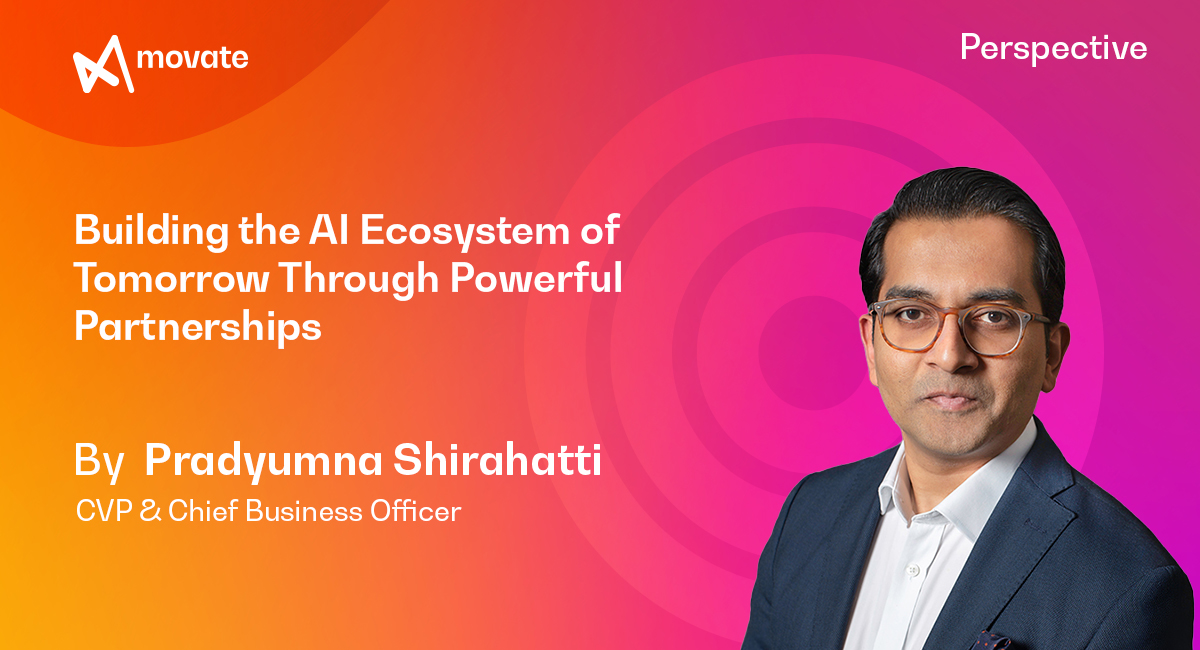
Artificial intelligence has entered a new phase of maturity. What was once a set of experiments and good-to-have applications is now a driving force behind how businesses operate, compete, and grow. The conversation is now no longer about adoption but about embracing AI at an enterprise scale.
Across industry segments, enterprises are embedding AI deeply into operations, supply chains, and customer experiences. However, in this fast-evolving environment, one truth is becoming clear: no organization can do it alone.
It’s clearer now than ever that enterprises thriving with AI success will be those that embrace AI ecosystem strategies and form partnerships to accelerate their transformation.
Beyond the Silos: Why Traditional Models Fall Short
For decades, enterprise business units relied on siloed models of technology adoption. Each department worked within its boundaries, often developing solutions independently. This approach worked when innovation cycles were slower, but it cannot keep pace with today’s AI-driven world.
The bottom line is that attempting to build everything in-house takes its own time, making it an anti-pattern. Developing advanced algorithms, scaling data pipelines, testing each model thoroughly, and implementing governance frameworks require immense investment. Beyond the cost, bringing AI ecosystem building blocks to life is extremely time-consuming, allowing competitors who collaborate with industry players to move faster and strengthen their position.
Traditional models also create blind spots. They limit access to specialized knowledge, making it harder to adopt emerging AI capabilities in areas such as generative models, agentic AI, responsible AI, and AI-infused automation.
The Power of Partnerships: The Cornerstone of Enterprise AI Strategy
With traditional models proving inadequate in today’s landscape, AI ecosystem-driven strategies serve as the ideal answer. An AI ecosystem is a collaborative network that brings together technology providers, startups, cloud platforms, model providers, and enterprise AI consultants for the successful development, deployment, operations, and governance of enterprise AI ecosystems.
Instead of trying to build the entire stack, business enterprises collaborate with partners who complement them in specific areas as per their strengths. Partnership-driven AI Ecosystem works because it pools expertise, accelerates innovation, and reduces barriers to adoption. New and emerging AI developments reach enterprises faster, and risks are shared across partners.

Real-World Success Stories: Partnership Models Powering the AI Ecosystem
As new AI technologies are emerging to meet the expectations of the modern business landscape, AI ecosystems are evolving beyond broad alliances into highly specialized partnership models. These new models shape how enterprises access, scale, and govern the AI ecosystems.
The different types of successful partnerships that we see in modern AI ecosystems include:
Hyperscaler–Frontier Model Partnerships
Cloud providers and AI Model Labs are forging deep, multi-year agreements that combine infrastructure, distribution, and go-to-market strategies. Microsoft’s pact with OpenAI is a defining example. By making OpenAI’s API exclusive to Azure and holding rights to use OpenAI IP in products like Copilot, Microsoft secures long-term business continuity and evolution.
Foundation Model Marketplaces
Enterprises increasingly prefer to work through neutral brokers that aggregate multiple models under a single API and billing framework. Amazon Bedrock exemplifies this approach, listing multiple providers with transparent details on regional availability and lifecycle notes.
For enterprises, such marketplaces reduce the risks of vendor lock-in, allow meaningful comparison of models on cost and performance, and provide a unified layer for governance and security.
Data Licensing and Content Supply Deals
As the demand for lawful and high-quality training data grows to satisfy the needs of modern AI, model developers are striking direct licensing agreements with content providers. These arrangements matter because they stabilize supply chains for training data, strengthen intellectual property protections, and build trust in enterprise adoption of AI models.
Together, these types of partnerships form the backbone of modern AI ecosystems. Such partnership-driven ecosystems provide advantages that go far beyond efficiency, reshaping how enterprises grow and succeed. Enterprises that align with the right mix of these partnerships position themselves to innovate faster, share risks, and compete more effectively in the next era of transformation.

Where the AI Ecosystem Is Heading?
With a myriad of successful AI ecosystem partnerships propelling organizations to greater heights, the global business landscape is poised to see monumental shifts. The next phase of ecosystem evolution will be defined by three converging trends:
- Agentic and Autonomous Systems: The emergence of agent-based architectures will transform how AI systems interact, collaborate, and make decisions autonomously across business functions.
- Sustainable and Responsible AI: Partnerships will increasingly focus on energy efficiency, model transparency, and compliance as regulatory frameworks like the EU AI Act come into force.
- Decentralized AI and Edge Intelligence: With data privacy and latency driving edge innovation, co-development between chipmakers, OEMs, and software partners will become central to enabling on-device intelligence. Similarly, decentralized AI signifies a paradigm shift with the integration of distributed networks such as blockchain technology, to process, store, and manage data.
These directions illustrate how AI ecosystems are evolving from technology alliances into dynamic, value-creating communities that shape the future of enterprise transformation.
Building a Collaborative Future for AI Enterprises
For enterprises looking to leave a mark, strategy will matter as much as ambition. A future-ready AI ecosystem strategy demands alignment with business goals, interoperability across technologies, clear governance, and a commitment to developing talent.
Enterprises need to start small and then scale, leveraging effective partnerships with industry leaders. Enterprises can co-develop pilot projects with trusted partners, refine them through real-world testing, and then scale the successful ones. This approach balances agility with sustainability, opening the door to providing consistent value.
Partnerships are the foundation for establishing resilience, innovation, and trust. Organizations that invest in strong ecosystems will be the ones shaping standards, driving responsible adoption, and securing leadership in a rapidly evolving market. The future of AI is already here, and the next era will be defined through a series of collaborations with different partners for different purpose.
About the author

Pradyumna Shirahatti serves as the Corporate Vice President and Chief Business Officer at Movate, where he leads strategic growth initiatives across three high-impact areas—scaling the Salesforce business, expanding the private equity channel, and driving the development of Movate’s AI go-to-market strategy.
With more than two decades of leadership experience, Pradyumna has held senior roles at globally recognized organizations including Salesforce, AWS, and Infosys. He brings deep domain expertise in the Health and Life Sciences sector, where he has led large-scale digital transformation programs and enterprise innovation initiatives. His approach to growth blends industry insight, ecosystem partnerships, and a strong focus on customer value creation.
